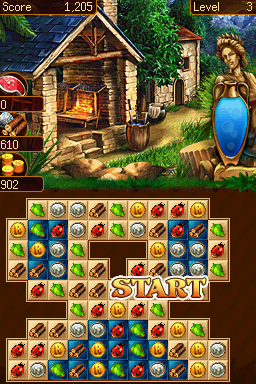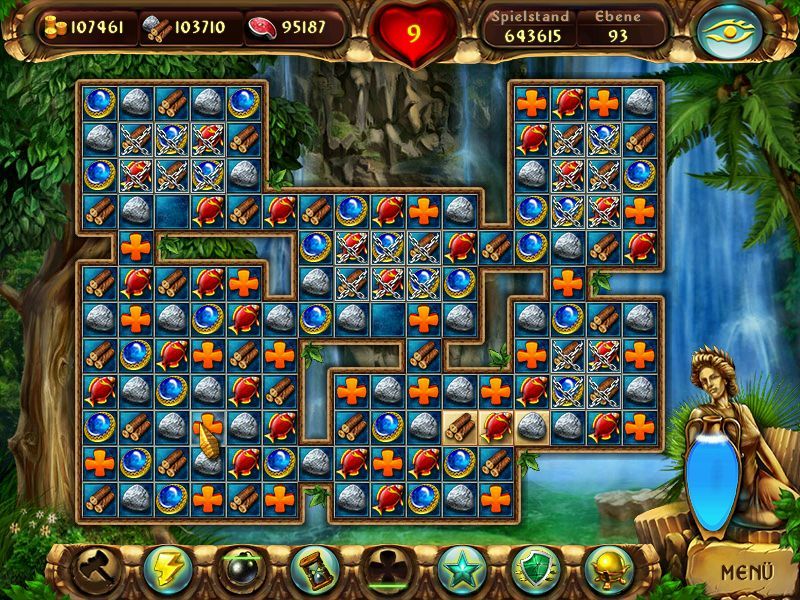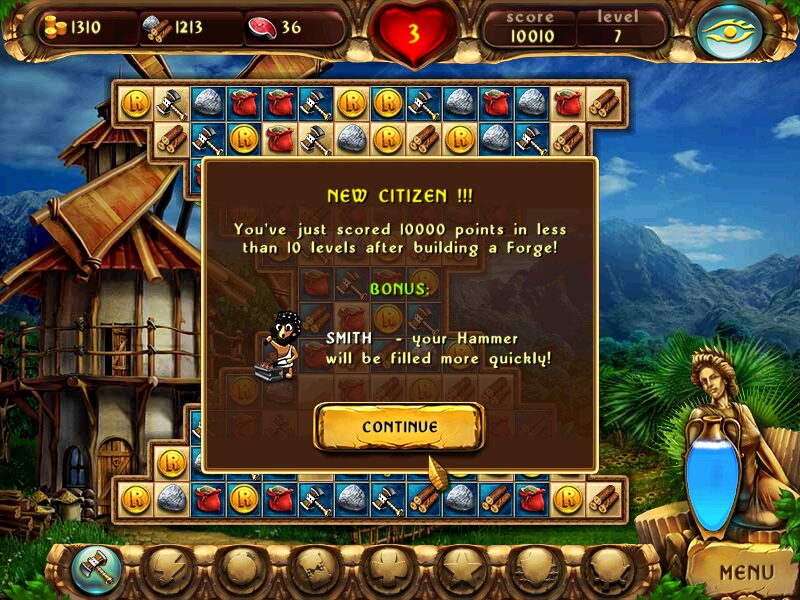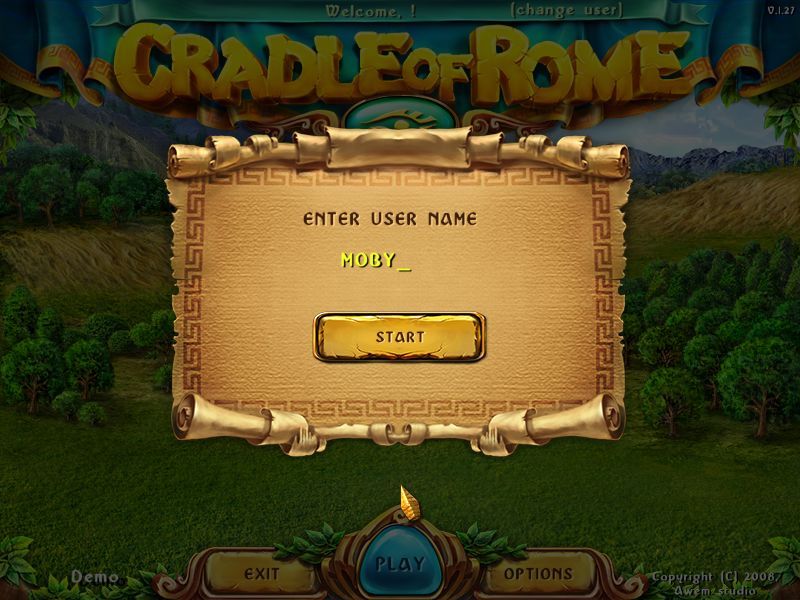Retro Replay Review
Gameplay
At its core, Cradle of Rome is a tile-matching puzzle game that combines the familiar “match three or more” mechanic with a resource-management layer. As you align wood, wine, and coin icons, each successful match adds to your resource pools displayed at the top of the screen. Building Rome then becomes a matter of matching the right tiles in the right order, emphasizing both speed and strategy.
The game’s amphora timer adds a gentle pressure to each level: a vessel slowly leaks water, and finishing the board before it runs dry grants bonus resources, while failure costs you a life. This mechanic keeps every session lively, encouraging you to think on your feet and balance the need for high-yield matches against the ticking countdown.
Special power-up tiles—axes, bombs, lightning bolts, and hourglasses—introduce additional layers of strategy. Matching an axe tile breaks a single unwanted tile; a bomb clears a 3×3 square; and an hourglass replenishes the amphora, giving you more time to plan your next big match. Chained tiles, meanwhile, force you to focus on clearing obstacles before they can contribute to your resource tally.
On the Nintendo DS, the game has been adapted beautifully for dual screens. The upper display shows your city’s progress and remaining lives, while the lower touch screen is the primary play area. Levels have been rebalanced for handheld play, and a new Free Play mode lets you revisit favorite boards without the pressure of resource goals or timers, perfect for casual topping up of resources or honing specific strategies.
Graphics
Cradle of Rome’s visual style leans into its classical antiquity theme with warm earth tones and richly detailed icons. Each resource tile—whether a stack of timber, a cluster of grapes, or a pouch of coins—is clearly illustrated, making it easy to recognize which matches will best serve your current building projects.
The backgrounds behind each board evoke Roman architecture and scenery, from marble-floored villas to bustling city squares. Subtle animations, such as fluttering banners or the glint of reflected sunlight on columns, bring the ancient world to life without distracting from the core puzzle gameplay.
On the DS, the dual-screen format enhances clarity. The top screen’s UI is crisp and informative, showing your resource totals and building blueprints, while the touch screen is bright and responsive. Transitions between levels and power-up effects feel snappy and rewarding, underscoring your progress as Rome gradually emerges tile by tile.
Story
While Cradle of Rome doesn’t center on a cast of characters or a branching narrative, its progression system delivers a compelling sense of growth. You begin with humble resources and few building options, but as you advance through levels, you unlock temples, forums, aqueducts, and grand monuments that shape your burgeoning city.
Each new structure comes with historical flavor text that nods to its significance in Roman culture. Though brief, these blurbs enrich the experience by placing your puzzle efforts within a wider context of Roman expansion and architectural achievement. It feels rewarding to see the map of Rome fill in as you accomplish milestones.
Because there is no fail-safe storyline, the “narrative” emerges through your own city’s development. Watching your settlement grow from a small cluster of huts to a sprawling metropolis is a payoff in and of itself, and it encourages you to keep matching tiles—and building monuments—until the empire is fully realized.
Overall Experience
Cradle of Rome strikes a satisfying balance between addictive puzzle action and light resource management. The dual-screen DS version, with its tailored difficulty curve and Free Play option, is especially suited to on-the-go gaming, letting you dive in for quick matches or marathon building sessions alike.
The game’s simplicity is one of its greatest strengths: there’s virtually no learning curve, but mastering power-up usage and timing your matches under the amphora’s leak creates plenty of challenge for both casual players and seasoned puzzle veterans. The incremental unlocking of buildings keeps the momentum steady and gives you clear short-term goals.
Overall, Cradle of Rome offers a polished, engaging puzzle experience wrapped in the charm of classical antiquity. Its accessible mechanics, attractive presentation, and sense of progression make it a worthwhile pick for anyone seeking a blend of match-three thrills and light city-building fun.
 Retro Replay Retro Replay gaming reviews, news, emulation, geek stuff and more!
Retro Replay Retro Replay gaming reviews, news, emulation, geek stuff and more!









Reviews
There are no reviews yet.